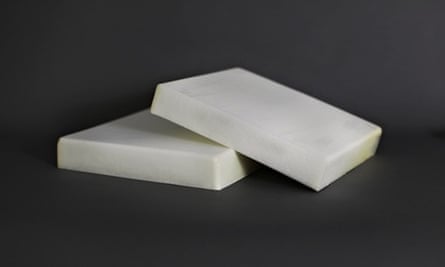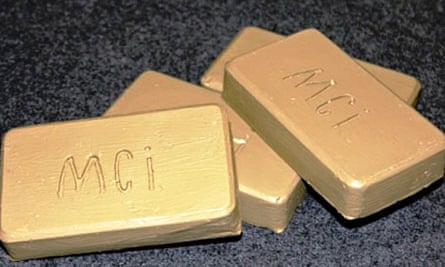Finding materials that are both sustainable and affordable has long been a central quandary in sustainable design. Certainly, high-cost, high-end materials, like sustainably-sourced hardwoods and post-consumer paper products, exist. However, the price of these products often pushes them out of the reach of many consumers.
Adding to the frustration is the fact that there is no dearth of available sustainable materials, including recovered waste. What if companies could move the recovered materials needle up a notch? What if, instead of simply diverting materials from landfills, they could recover a harmful waste material before it is even released? And what if, in the process, they could replace some of the most environmentally unsound materials currently in use?
Those questions lie at the heart of a new level of sustainable materials engineering. Across the globe, a growing cadre of engineers and researchers are looking for ways to transform greenhouse gasses into useable materials.
For the most part, the push to deal with greenhouse gasses has focused on limiting, offsetting and sequestering the materials, either by regulating the gasses that factories release, encouraging manufacturers to offset their "carbon footprint," or collecting greenhouse gasses and burying them deep within the earth. However, many of these gasses are at least partially composed of carbon, which means that they contain the building blocks of many popular materials, including plastic.
The vast majority of plastic is produced from petroleum, which means that the long carbon chains that make up the material come from one of the most environmentally costly materials on the planet. The question, then, is how to take the carbon molecules that make up greenhouse gasses like methane, carbon dioxide and carbon monoxide, and transform them into long, plastic-like carbon chains.
Creating carbon chains
AirCarbon entrepreneur Mark Herrema thinks that he may have a solution. By combining methane and carbon dioxide with a proprietary catalyst, his company rearranges the carbon into long chains, producing a plastic that can then be used to make bottles, chairs or almost anything else that plastic is currently used for.
AirCarbon diverts carbon from the atmosphere, but instead of burying it in the earth or storing it in canisters, it repurposes it as a useable material. Herrema emphasizes that his company's product is completely carbon negative: from collection of the greenhouse gasses to transportation to production of the plastics. Currently, AirCarbon's plastics are used by over thirty companies, including Virgin and KI.
"Keeping up with demand is our biggest challenge right now," Herrema explains. In August, 2013, the company scaled up to commercial production for the first time, and are now focusing on expansion. It plans to open another plant in late 2014 or early 2015.
Part of AirCarbon's high demand comes from the fact that it not only competes on sustainability, but also competes on price. "We want to make a global scale difference with this resin, and the only way we could do that was if we out-competed on price," Herrema says.
A growing trend?
AirCarbon isn't the only company that is working on putting greenhouse gasses to better use. Novomer, a US-owned company, is also trying to find ways to replace existing materials with sequestered carbon. Novomer uses carbon dioxide and carbon monoxide, both greenhouse gasses.
Its carbon monoxide work is largely comparable to AirCarbon's: it uses organic catalysts to encourage the carbon in carbon monoxide to form long chains, producing a material that can replace many current plastic uses. Eventually, the company estimates, its work with carbon monoxide could yield a market potential in excess of $12bn.

But Novomer goes in a different direction with its carbon dioxide. Rather than using it to create a plastic, the company uses traditionally-produced plastic monomers to trap carbon dioxide, creating foams that can be used in construction, clothing, footwear and a host of other products. Simon Waddington, a market development manager for the company, notes that these foams could, potentially, offer something new to the market.
"Our foams have less carbon than most existing foams, which could make them less flammable," he notes. In addition to sequestering carbon, they could also be less bulky and more rigid than existing foams, allowing them to offer the same protection and insulation properties of current foams, but in more compact forms.
A cheaper option?
Right now, Novomer's foams are in the development stage; the company is still five years from being ready for the market. Ultimately, however, it hopes to kill two birds with one foam: provide a way to sequester dangerous greenhouse gasses, while simultaneously expanding the materials available to designers. As an added plus, Waddington notes that the low cost of carbon dioxide could drop prices. In the long term, he estimates, "we can get to about 80% of the cost of existing mainstream building materials."
This multi-faceted perspective is also apparent in the plans of Mineral Carbonation, an Australian startup that hopes to do commercial-scale carbonation of minerals. In a nutshell, the company's plan is to combine waste carbon dioxide with naturally-occurring magnesium and calcium to create magnesium carbonate and calcium carbonate. The resulting rock, which would be bulkier than the original minerals, could be used to stabilize abandoned mines. The excess material, in turn, could be used as a building and paving material.

Given its goal of mine stabilization, Mineral Carbonation has partnered with Orica, an Australia-based mining concern. However, Marcus Dawes, the company's CEO, notes that Mineral Carbonation is also branching out to interact with designers and building companies. "Eventually, we'll create bricks, pavers, cavity walls and formed products like plasterboard," he says. "We'll start doing that in about 2016."
As more and more companies look for ways to transform greenhouse gasses into useable materials, it's clear that a variety of other concerns are coming into play. After all, while sequestering carbon into environmentally-sustainable forms is a worthwhile goal in its own right, the process becomes truly attractive on a business scale when it produces a competitively-priced product that fills a market need. Designers can then focus on doing a bit of commercial alchemy: using a dangerous industrial byproduct to fill a major market need.

Comments (…)
Sign in or create your Guardian account to join the discussion